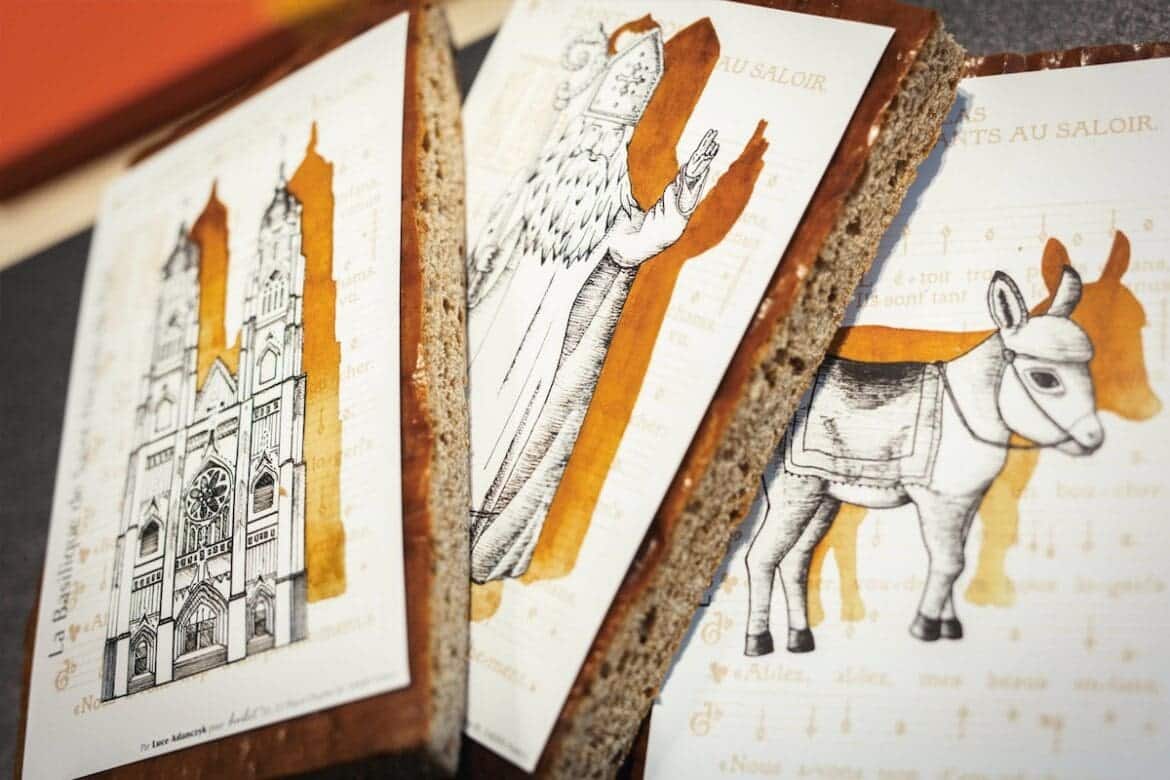Photo by © B. Jamot, courtesy of the Lorraine Tourism Office
**This article is a direct feature from the November/December 2023 My French Country Home magazine. To see more articles like this featuring French culture traditions, be sure to subscribe to the magazine!**
Saint Nicolas – the patron saint and protector of children – is synonymous with the Christmas holidays across much of northern and central Europe. Also known as Père Noël, his feast day on December 6th is particularly celebrated in the eastern French regions of Alsace and Lorraine, with jubilant parades, festivities and many time-honored traditions to usher in the season.
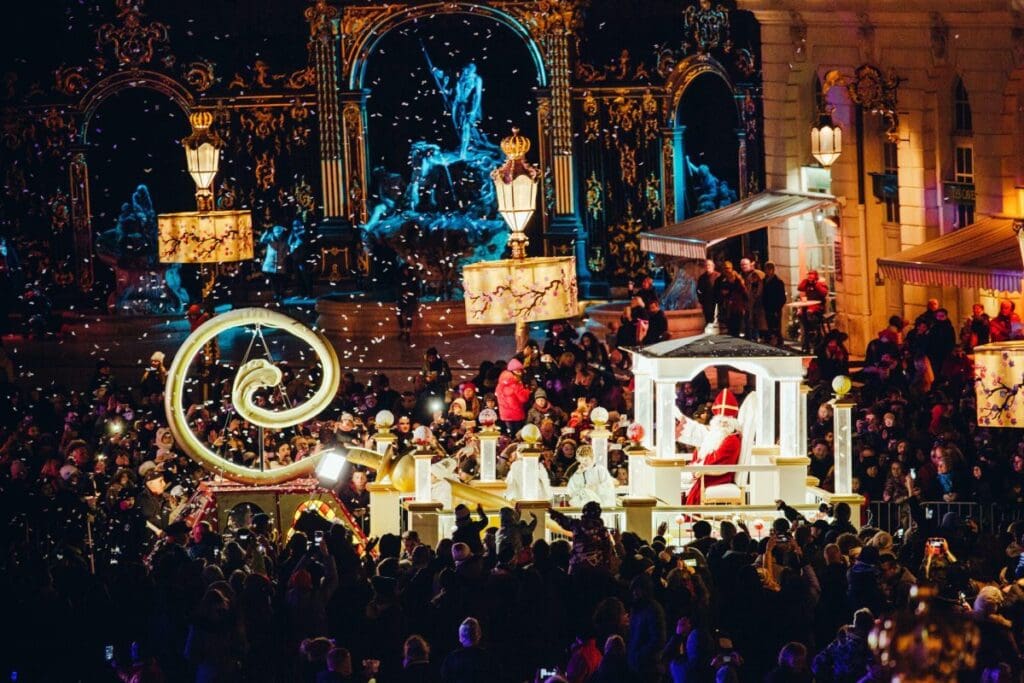
SUBSCRIBE TO THE MAGAZINE
While shopkeepers may set up their festive displays and strings of fairy lights start their twinkling as early as mid-November, in many parts of Europe, Saint Nicholas Day – La Fête de Saint Nicolas – is when the holiday season really kicks off. In fact, to children and their families in eastern France it is anticipated with as much – if not more – excitement as Christmas itself.
Though the festival dates back as far as the 12th century, just how “Saint Nick” evolved into an integral part of the season commemorating the birth of Jesus is not entirely clear. What we do know is that he was a real person: Nicolas was an Orthodox bishop from Myra, a small village in southwestern Turkey.
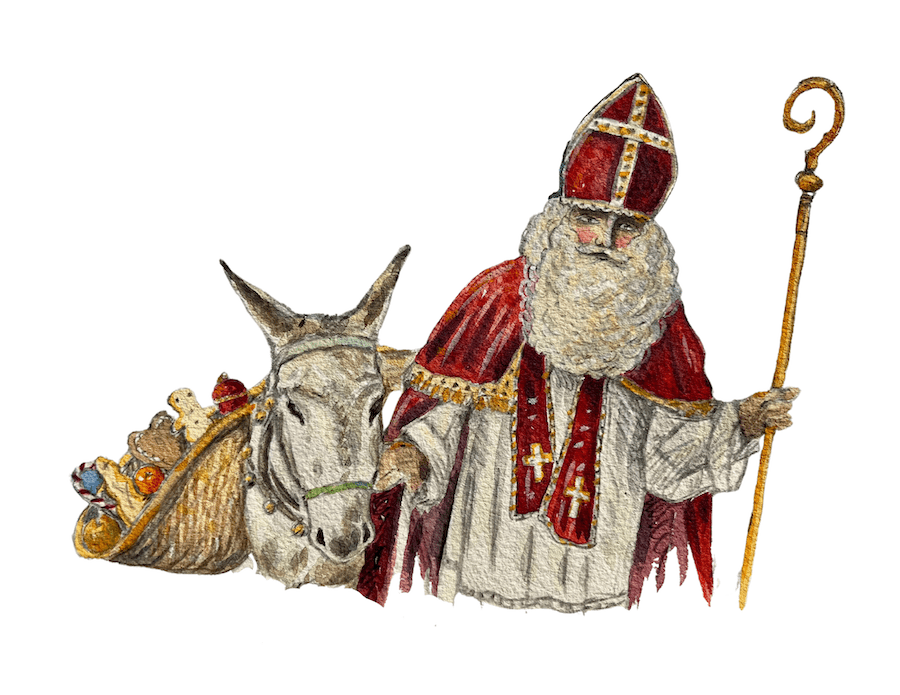
Born to a wealthy family around 270 A.D., he was orphaned at a young age and dedicated his life and his fortune to helping the poor and the destitute. Legend has it that the bishop used to wander the streets of Myra in disguise, seeking out the homes of good and obedient children, where he would return late at night to distribute fruits, chocolates and other treats outside their homes. Naughty children, meanwhile, were visited by his sidekick, Père Fouettard (“Father Whipper”), who doled out lumps of coal, twigs… and the occasional spanking.
Upon his death in 331, Nicholas was made a saint and laid to rest in a church built in his honor. Seven centuries later, when Myra was eventually overrun by Muslim armies during the Crusades, the saint’s remains were divided up and spirited away, eventually ending up scattered across the Holy Roman empire. A crusader from Lorraine – in northeastern France – returned home with one of Saint Nicolas’ finger bones and donated it to a small chapel in his hometown of Port, near modern-day Nancy. In the 15th century, the Duke of Lorraine replaced the modest chapel with a flamboyant gothic basilica and declared Nicolas the duchy’s patron saint.
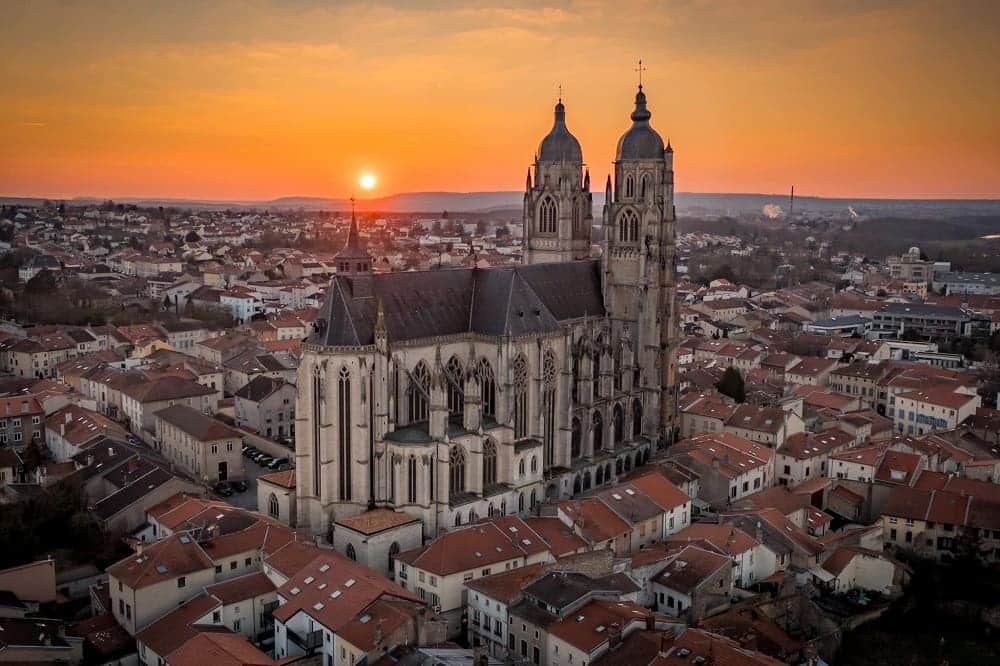
Photo by Red Brant for the BLE Lorraine Group
Every year since, on December 6th – the anniversary of Saint Nicolas’ death – villages across Lorraine (and neighboring Alsace) have staged torch-lit parades and re-enactments that celebrate his life’s story. To this day, on the eve of the Fête de Saint Nicolas, the children of eastern France continue the tradition, placing a shoe on their doorstep in the hope that it will be filled with goodies the next morning.
Next to the shoe, they often also leave a glass of milk or juice for Saint Nicolas – and sometimes a carrot for his donkey. Citizens dressed as Saint Nicolas and Père Fouettard also play a central role in the festivities, tossing handfuls of candies and trinkets to the crowds that line the parade routes.
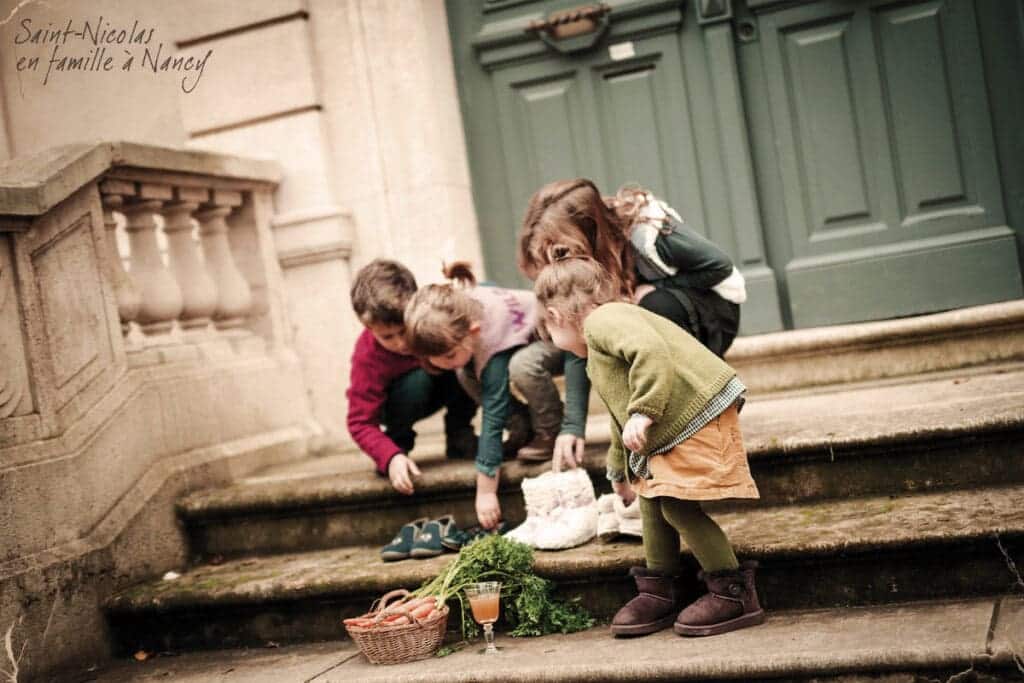
Photo by © B. Jamot courtesy of the Lorraine Tourism Office
It goes without saying that the Fête de St. Nicolas is an especially big event in the provincial capital of Nancy, making early December an ideal time to visit the city. On the day of the grand parade, which finishes in the stunning Place Stanislas, families flock to see the hundreds of colorful floats and watch street musicians and artists perform until the wee hours. Along the illuminated square, vendors selling local delicacies including spiced wine, gingerbread and manalas – sweet Nicolas-shaped brioches – abound. A rousing fireworks display caps off the evening.
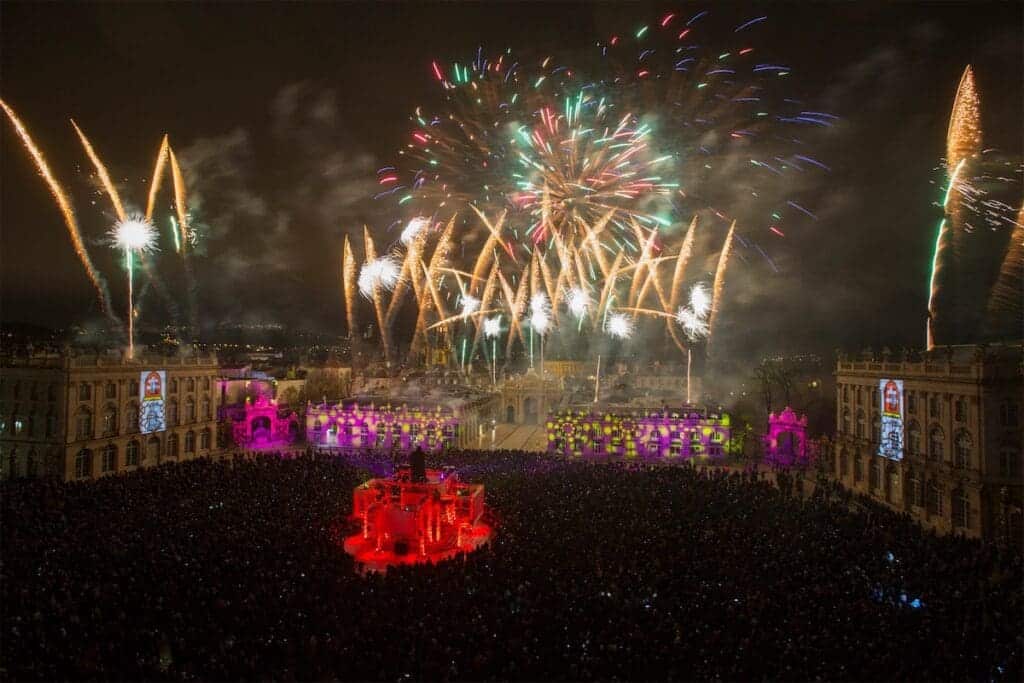
Photo courtesy of the Lorraine Tourism Office
This year, Nancy happens to be celebrating the 40th anniversary of the Place Stanislas’s designation as a UNESCO world heritage site. The square’s ornate 17th century façades will be given particular pride of place, hosting special performances, illuminations and other embellishments. If you plan a visit, definitely bring your walking shoes – and just maybe place them outside your door. You never know….
Written by Nicola Clark

Treat yourself (or someone you love) to a sweet-smelling gift from Saint Nicolas! Find this festive scented soap made in Marseille and other small gifts available on the MFCH Boutique.

